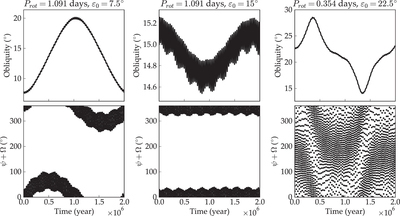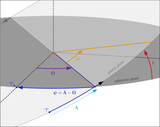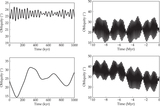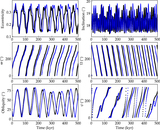Image Details

Caption: Figure 8.
Obliquity evolution at points b (left; ﹩{P}_{\mathrm{rot}}=1.091﹩ days, ﹩{\varepsilon }_{0}=7\buildrel{\circ}\over{.} 5﹩), c (middle; ﹩{P}_{\mathrm{rot}}=1.091﹩ days, ﹩{\varepsilon }_{0}=15^\circ ﹩), and d (right; ﹩{P}_{\mathrm{rot}}=0.354﹩ days, ﹩{\varepsilon }_{0}=22\buildrel{\circ}\over{.} 5﹩) in the left panel of Figure 5. The orbital evolution is identical to case a in Figure 7. At point b, the planet is in a secular spin–orbit resonance that pumps its obliquity to ﹩\approx 20^\circ ﹩, and ﹩\psi +{\rm{\Omega }}﹩ librates about 0°. It is close to Cassini state 2: the secular resonance can be described as the motion about state 2. At point c, the planet is extremely close to Cassini state 2: the argument ﹩\psi +{\rm{\Omega }}﹩ librates more closely about 0°, and the obliquity oscillation becomes much smaller, nearly satisfying two of Cassini’s laws. At point d, the planet is in a spin–orbit resonance with eigenvalue s5. The resonance is not clearly imprinted on the angle ﹩\psi +{\rm{\Omega }}﹩, however, because the eigenvalue s4 still dominates the evolution of Ω.
Copyright and Terms & Conditions
© 2018. The American Astronomical Society. All rights reserved.












